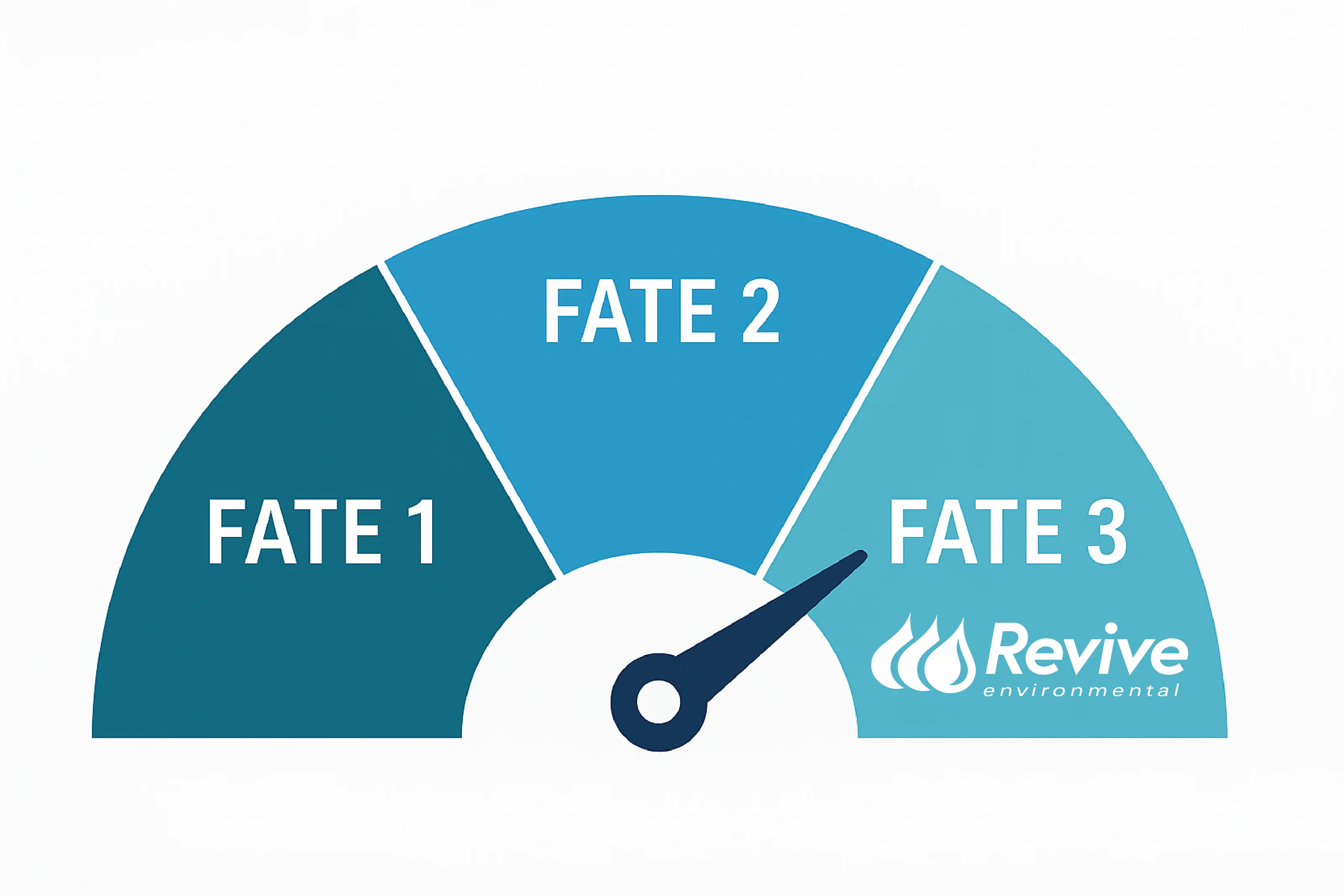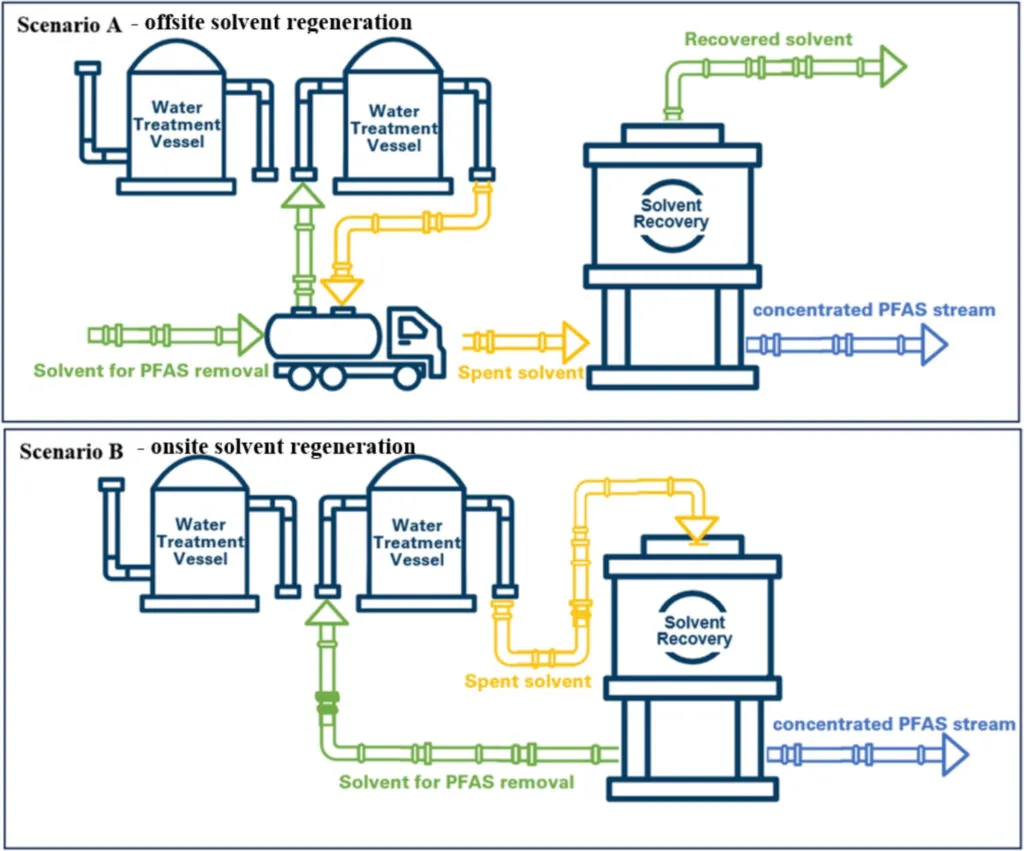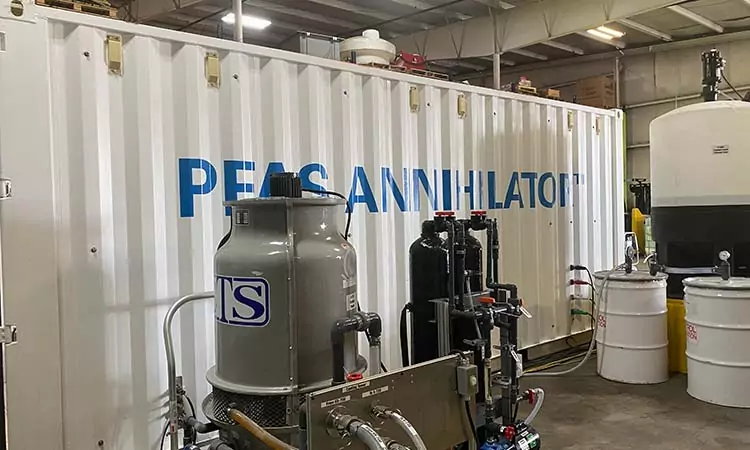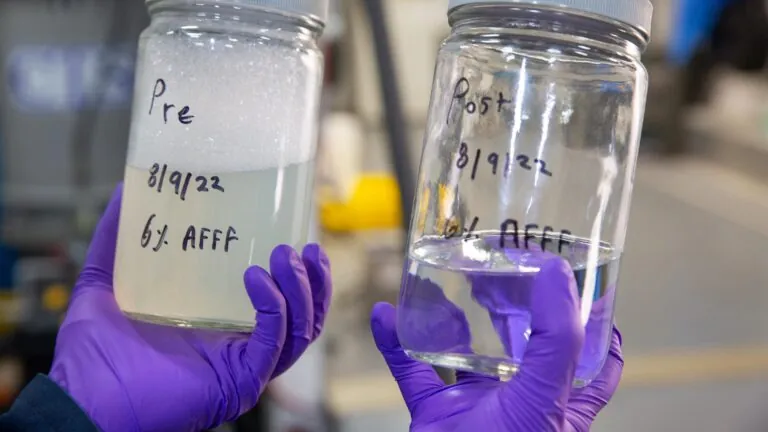New Research Highlights the Need for Smarter PFAS Spent Media Management
A new peer-reviewed study published in Water Environment Research is bringing much-needed attention to a crucial but often overlooked piece of PFAS treatment: what happens to the media after it captures PFAS?
The article, Spent Media Management Pathways for PFAS Treatment Applications, was led by Dr. Alison Ling of the University of St. Thomas and co-authored by a team of experts, including Tiffany Stegner, Interim Operations Manager and Product Manager for GAC RENEW™ at Revive Environmental. The research provides a comprehensive analysis of lifecycle options for managing spent granular activated carbon (GAC) and anion exchange resin (AER), including destruction, regeneration, reactivation, and disposal.
The Hidden Cost of PFAS Treatment: What Happens After Separation?
As more drinking water and industrial systems deploy GAC and AER to meet increasingly stringent PFAS regulations, a new challenge is emerging: what to do with the PFAS-laden media once it has been spent?
The study confirms that the production and disposal of virgin media are the largest contributors to lifecycle energy use and operational costs. Without a well-defined media end-of-life strategy, utilities and operators risk higher long-term costs, limited disposal options, and exposure to future liability.
Destruction vs. Disposal: The Real Standard for PFAS Risk Reduction
One of the most critical findings of the study is the need to differentiate between removal and destruction. Many current approaches merely concentrate on or relocate PFAS rather than eliminating them, leaving the underlying risk unresolved.
The paper introduces the concept of the “PFAS fate” scale:

The PFAS FATE Scale:
Fate 0–1: PFAS is sequestered but not destroyed (e.g., landfill)
Fate 2: Partial destruction with an unknown amount returning to the environment. This includes incineration processes that do not achieve complete destruction.
Fate 3: Full mineralization of PFAS is likely.
At Revive Environmental, our solutions, including our PFAS Annihilator® platform powered by supercritical water oxidation (SCWO), are designed to achieve Fate 3 outcomes, providing confidence that PFAS is destroyed and no longer a liability.
GAC RENEW™: A Highlighted Innovation
The study also features Revive’s GAC RENEW® technology, a low-energy, solvent-based GAC regeneration platform that allows utilities and facilities to reuse existing media rather than replacing it. GAC RENEW is particularly impactful for non-potable industrial and groundwater systems with high carbon demands.
To support varying treatment scales and infrastructure, the study presents two implementation models for GAC RENEW®: offsite solvent regeneration (Scenario A) and onsite solvent regeneration (Scenario B). Both use a nonthermal, low-energy solvent process to extract PFAS from spent GAC, followed by solvent recovery and generation of a concentrated PFAS stream for destruction via SCWO. While off-site regeneration is well-suited for smaller or fragmented systems, onsite regeneration provides significant benefits for large-scale or centralized operations, including reduced transportation logistics, longer carbon life from reduced handling, and lower total life-cycle costs. These flexible configurations allow facilities to tailor their PFAS treatment strategies based on operational size, budget, and treatment objectives.

Under Tiffany Stegner’s leadership, GAC RENEW is evolving from successful pilot programs to a scalable regeneration solution. Revive has also strengthened its technical capabilities by recruiting top research talent, including Dr. Adam Redding, to help design performance-based, tailored PFAS treatment solutions for our customers. Combined with SCWO-based destruction of the recovered PFAS, GAC RENEW is a key component of a full-circle, high-performance PFAS treatment strategy.
Takeaway: Plan for Spent Media Early—and Intelligently
This research underscores what forward-looking operators already know: spent media management isn’t optional, it’s strategic. As PFAS regulations grow more complex and comprehensive, utilities, engineers, and industrial operators need to account for:
Leadership Through Science and Solutions
We’re proud of Tiffany Stegner’s contribution to this groundbreaking research, which helps elevate the entire industry’s understanding of PFAS management. Her dual role as a researcher and product leader exemplifies Revive’s approach: backing innovation with evidence and delivering results with integrity.
Want to go deeper?
Read the full article in Water Environment Research: Spent Media Management Pathways for PFAS Treatment Applications.
Explore GAC RENEW™ and see how Revive can help you reduce costs, minimize waste, and eliminate PFAS.


